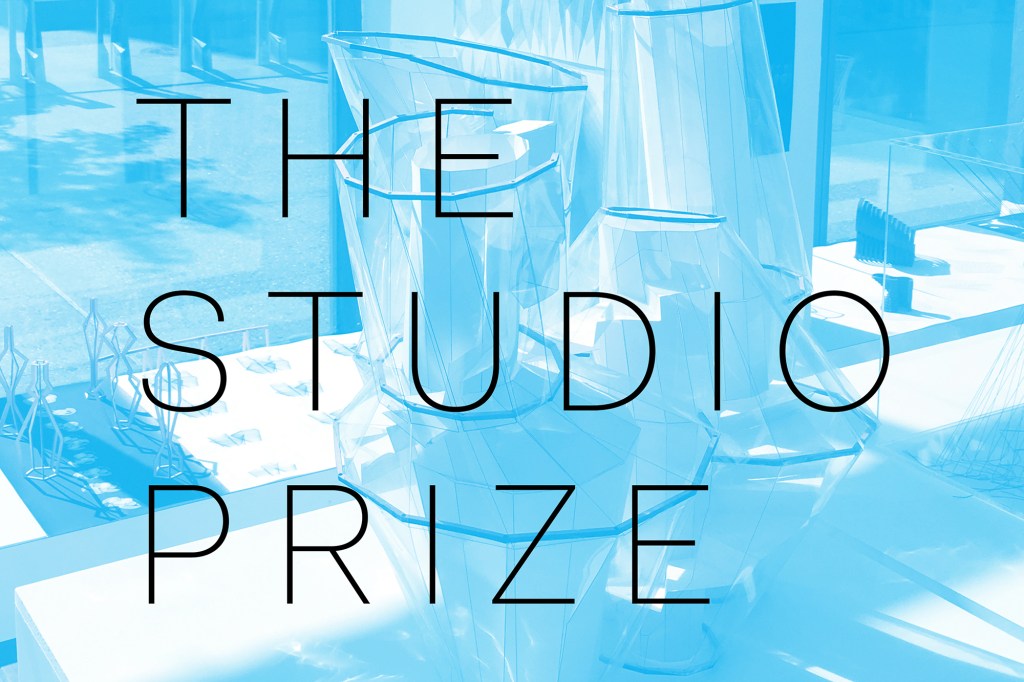See all of the 2018 winners of the Studio Prize.
Studio Brief | Working from Paul Klee’s observation that “drawing is taking a line for a walk,” this studio introduces first-year undergraduates to the principles of line, plane, and volume through a series of additive—or “animate”—exercises. The studio culminates in a presentation by each student of a portfolio of drawings and models, along with a narrative explanation of the work.
Investigation | Mersiha Veledar, an assistant professor at the Cooper Union, doesn’t believe in easing her first-year students into the school’s rigorous undergraduate program—and it shows in the way she designed her studio, Animate Archi-Tectonics, which throws them headfirst into a deep exploration of how lines, planes, and volumes come together to create architectural forms.
The studio is split into three phases, beginning with an examination of the ways lines intersect. From those drawings, students investigate how the forms created by those intersections function at different scales and dimensions; they then build models, which they test in terms of scale and habitation—inserting doors and stairs, for example.
“In my book the most exciting thing about this studio is showing students how abstractions can be made real,” Veledar says.
Students build on those line drawings and models in the next two phases, which move into a study of planes and then volumes—in this way, the students’ projects are “animate,” a way of emphasizing the dependence of even the most intricate designs on these basic architectonic elements.
The studio functions on multiple levels: not only in its explicit content, but in its structure—even the requirement that each project have a narrative and a title serves a pedagogic purpose, Veledar said. The student narratives had to explain how they developed their project, as well as how the final version coheres as a statement.
“They have to learn how to argue through a project, and how to present it,” Veledar says.
Though Veledar’s studio is a challenge for students who are just a few months out of high school, she said she was impressed with how much they were able to advance within just a few months. The jurors agreed. “I think the work is beautiful,” said juror Eric Owen Moss, FAIA, who was also impressed with Veledar’s unconventional approach to introducing basic architectural concepts. “It does seem to suggest that there is another way to see, study, and speculate about form and shape.”
Student Projects |
Bundled Matrix
For the “line” phase of the studio, Jiwon (Jenny) Heo turned to the inspiration of sculptor Ruth Asawa’s woven mobiles and objects to create a generative field of lines that could be understood in plan or section. Heo created a sequence of drawings composed of bundled matrices of circles and lines. Those bundles were given verticality and form in later phases, and translated to an occupiable space defined vertically by stairs and skylights.
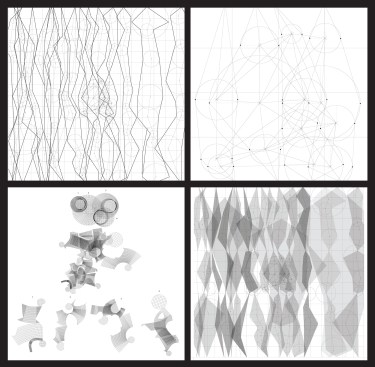
Jiwon (Jenny) Heo
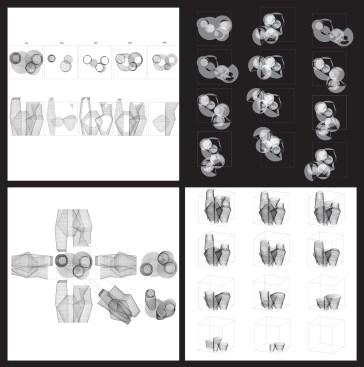
Jiwon (Jenny) Heo
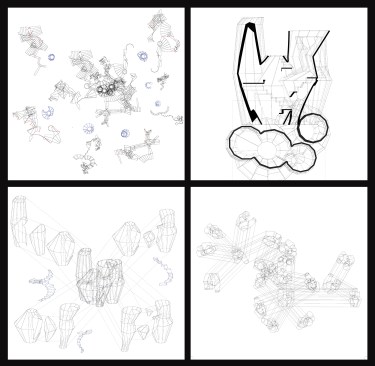
Jiwon (Jenny) Heo
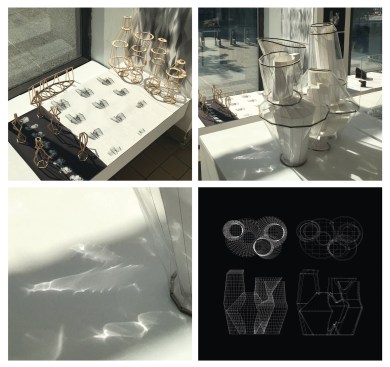
Jiwon (Jenny) Heo
Rotations, Voids, and Spatial Inflections
Xinyi (Cindy) Guo investigated voids as a kind of spatial algorithm, creating a series of surfaces in the planes phase that she explored in physical and digital models. Guo developed structural models by either folding or rotating the various linear components. She then rotated these elements to create iterations of inhabitable voids, and used light to animate the spaces.
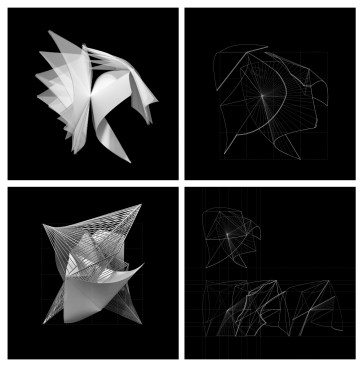
Xinyi (Cindy) Guo
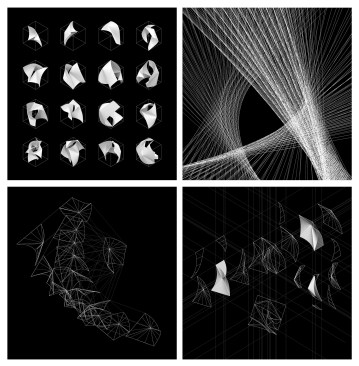
Xinyi (Cindy) Guo
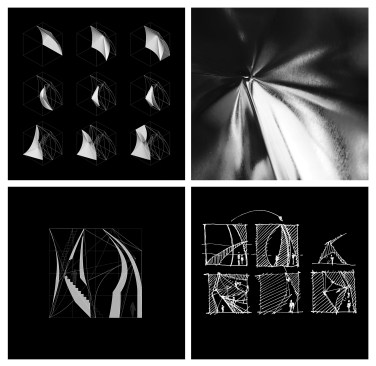
Xinyi (Cindy) Guo
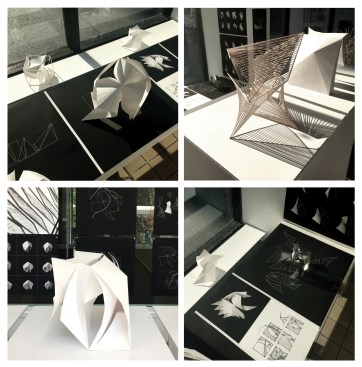
Xinyi (Cindy) Guo
Tectonic Rhizome
Sidney Hoskulds-Linet looked to the idea of a rhizome—a constantly expanding root system—to develop a scheme that could grow and respond during the line, plane, and volume phases, maintaining continuity while responding to changing parameters. Hoskulds-Linet identified horizontal and vertical pathways as the project additively evolved from lines to planes, but, as it moved to three-dimensional models for volumes, used subtraction to create circulation routes for both users and light.
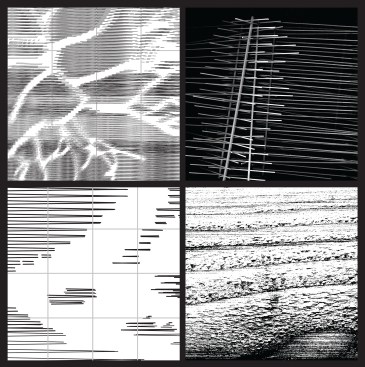
Sidney Hoskulds-Linet
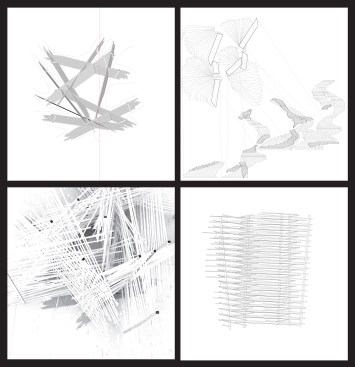
Sidney Hoskulds-Linet
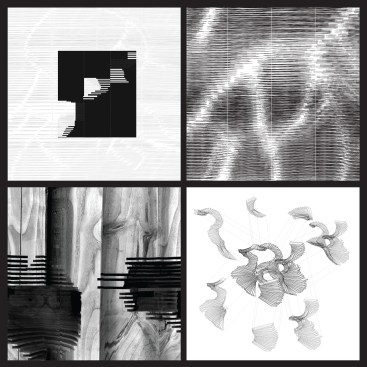
Sidney Hoskulds-Linet

Sidney Hoskulds-Linet
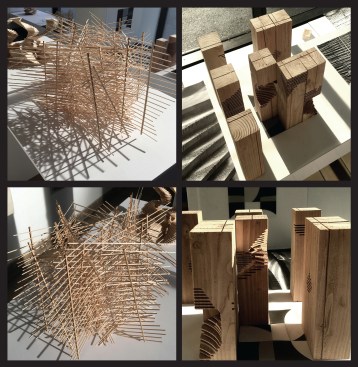
Sidney Hoskulds-Linet
Studio Credits |
Course Name: Animate Archi-Tectonics: Structural Configurations Between Lines, Planes, and Volumes
School: The Cooper Union, The Irwin S. Chanin School of Architecture
Level: B.Arch., year one
Duration: Fall 2017 semester
Professors: Mersiha Veledar (assistant professor, studio coordinator, proportional time); Alexa Tsien-Shiang (assistant professor, adjunct); Yasmin Vobis (visiting professor II)
Students: Xinyi (Cindy) Guo, Jiwon (Jenny) Heo, Sidney Hoskulds-Linet (submitted projects); Suet Wa Au, Xiaohan Bao, Ezekiel Binns, Jiawen Chen, Amanda Cheng, Thomas Choi, Kevin Chow, Ji Yong Chung, Tilok Costa, Yuval Gesser, Kai Huang, Kyungmin Kim, Maria Eleni Komninou, Sanjana Lahiri, Sebrina Leventis, Julia Maevski, Ahzin Nam, Tiam Schaper, Chulin Yu
Techniques/Tools: freehand sketches; drawing techniques (AutoCAD LT, Rhinoceros 3D, Grasshopper scripts, photographs, Adobe Creative Suite); animations (Adobe Photoshop, Final Cut Pro); drawing nomenclatures (2D plans, sections, composite drawings, unrolled elevations, 3D oblique “de-assembly construction” drawings, “object rotation” drawings, exploded “part-to-whole” axonometrics, “generating concept” animations); analog model making (paper, wood, and metal shop tools); digital model making (Rhinoceros 3D, 2D laser cutter, 3D printing tools)
